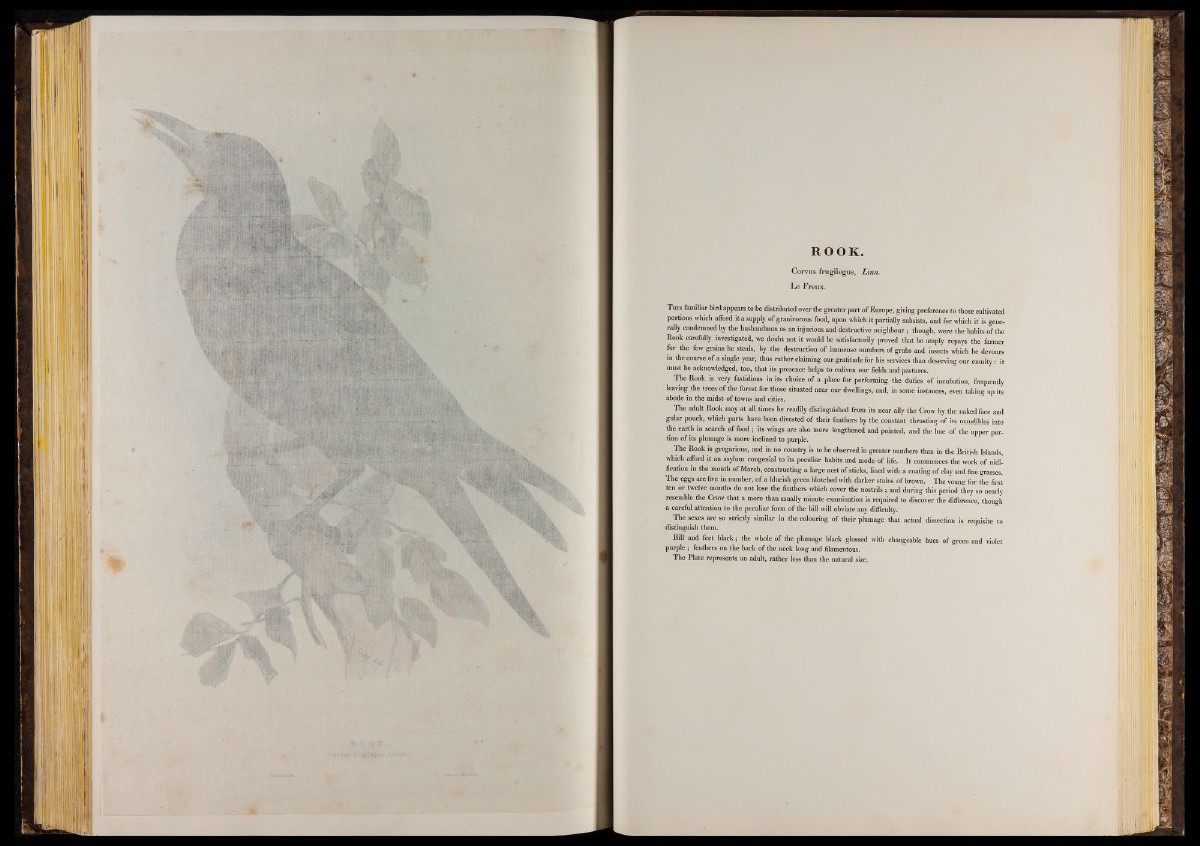
R O O K .
C orvus frugilegus, Linn.
L e F re u x .
This familiar bird appears to be distributed over the greater part o f Europe, giving preference to those cultivated
portions which afford it a supply of granivorous food, upon which it partially subsists, and for which it is generally
condemned by the husbandman as an injurious and destructive neighbour; though, were the habits of the
Rook carefully investigated, we doubt not it would be satisfactorily proved that he amply repays the farmer
for the few grains he steals, by the destruction of immense numbers of grubs and insects which he devours
in the course of a single year, thus rather claiming our gratitude for his services than deserving our enmity: it
must be acknowledged, too, that its presence helps to enliven our fields and pastures.
The Rook is very fastidious in its choice of a place for performing the duties of incubation, frequently
leaving the trees of the forest for those situated near our dwellings, and, in some instances, even taking up its
abode in the midst o f towns and cities.
The adult Rook may at all times be readily distinguished from its near ally the Crow by the naked face and
gular pouch, which parts have been divested of their feathers by the constant thrusting of its mandibles into
the earth in search of food ; its wings are also more lengthened and pointed, and the hue of the upper portion
o f its plumage is more inclined to purple.
The Rook is gregarious, and in no country is to be observed in greater numbers than in the British Islands,
which afford it an asylum congenial to its peculiar habits and mode of life. It commences the work of nidi-
fication in the month of March, constructing a large nest o f sticks, lined with a coating o f clay and fine grasses.
The eggs are five in number, o f a blueish green blotched with darker stains o f brown. The young for the first
ten or twelve months do not lose the feathers which cover the nostrils ; and during this period they so nearly
resemble the Crow that a more than usually minute examination is required to discover the difference, though
a careful attention to the peculiar form of the bill will obviate any difficulty.
The sexes are so strictly similar in the colouring of their plumage that actual dissection is requisite to
distinguish them.
Bill and feet black; the whole of the plumage black glossed with changeable hues of green and violet
purple ; feathers on the back of the neck long and filamentous.
The Plate represents an adult, rather less than the natural size.